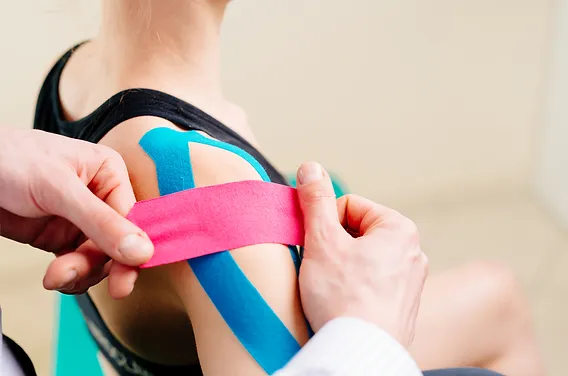Sports injuries, ranging from sprains to muscle tears, are common occurrences for athletes at all levels. While physical therapy, rest, and medications are often the go-to methods for treatment, there’s another powerful recovery tool that can help accelerate the healing process: medical massage therapy. Explore how medical massage therapy works, its benefits in treating sports injuries, and why athletes swear by it for faster recovery.
How Does Medical Massage Help with Sports Injuries?
Sports injuries can affect different parts of the body, including muscles, ligaments, tendons, and bones. Depending on the type of injury, medical massage therapy can help in the following ways:
1. Improved Circulation
Massage helps increase blood flow to the injured area, which promotes the delivery of oxygen and nutrients necessary for tissue repair. Improved circulation also helps flush out toxins that may have accumulated due to inflammation or injury.
2. Pain Relief
One of the immediate benefits of medical massage therapy is its ability to reduce pain. By targeting muscle knots and trigger points, massage can alleviate muscle tension and promote the release of endorphins, the body’s natural painkillers. This can help athletes manage pain and discomfort during the recovery process.
3. Reduced Muscle Tension and Spasms
After a sports injury, muscles may become tight and stiff as a protective mechanism. This can lead to further discomfort and limited mobility. Medical massage therapy helps release tension in the muscles, reducing spasms and encouraging a quicker recovery.
Expert Opinions: How Medical Massage Benefits Athletes
Physical Therapists Weigh In
Many physical therapists recommend medical massage therapy as part of a comprehensive rehabilitation plan for athletes recovering from sports injuries. According to Dr. Mark Johnson, a physical therapist, “Medical massage therapy is an invaluable tool when it comes to sports injury recovery. It works in conjunction with physical therapy exercises and stretches to improve healing, reduce pain, and enhance mobility.”
Therapists often incorporate medical massage benefits into their treatment plans for conditions like tennis elbow, rotator cuff injuries, IT band syndrome, and lower back pain. It can be especially helpful in cases where inflammation and muscle tightness are preventing the healing process.
Insights from Athletes
Many athletes have experienced firsthand the benefits of medical massage therapy in their recovery process. Take, for example, elite marathon runner Sarah Mitchell, who swears by medical massage to keep her muscles in peak condition. “After my long runs, my muscles are often sore and fatigued. Regular medical massage helps alleviate the tension, reduces my recovery time, and ensures that I’m ready for my next training session,” says Mitchell.
Types of Sports Injuries Treated with Medical Massage
Medical massage therapy is effective for treating a variety of sports injuries.
1. Sprains and Strains
Sprains (ligament injuries) and strains (muscle or tendon injuries) are common in athletes. Medical massage can help reduce swelling, alleviate pain, and promote faster healing by targeting the injured tissue and encouraging better blood flow.
2. Tendonitis
Tendonitis, or inflammation of the tendons, is frequently caused by overuse during sports activities. Medical massage can help alleviate the symptoms of tendonitis by releasing tight muscles and easing the tension around the affected tendon.
3. Muscle Tears
Medical massage therapy can aid in the recovery from muscle tears by stimulating blood circulation, reducing scar tissue formation, and improving flexibility. This is especially beneficial for athletes who need to restore full functionality in their muscles after a tear.
How to Integrate Medical Massage into Your Recovery Plan
If you’re an athlete recovering from a sports injury, medical massage therapy should be part of a broader rehabilitation plan.
- Consult a Professional: Before starting medical massage, it’s important to consult with a healthcare provider or physical therapist to determine if massage therapy is appropriate for your injury.
- Follow a Treatment Plan: Medical massage is most effective when performed regularly over some time. Work with your therapist to develop a treatment plan that aligns with your specific recovery needs.
- Combine with Other Therapies: While massage therapy can aid in the healing process, it’s important to combine it with other treatments, such as physical therapy exercises and proper rest, to ensure a complete recovery.
Conclusion
Medical massage therapy offers numerous benefits for athletes recovering from sports injuries. From improving circulation and reducing pain to promoting faster healing of soft tissue injuries, medical massage plays a vital role in a comprehensive recovery plan. Whether you’re an amateur athlete or a seasoned professional, incorporating medical massage into your rehabilitation routine can speed up recovery and help you get back to your sport sooner.
FAQs:
-
How often should I get a medical massage for a sports injury?
The frequency of medical massage depends on the severity of the injury and your recovery goals. Typically, it’s recommended to start with 2-3 sessions per week and gradually reduce as healing progresses.
-
Is medical massage safe for all types of sports injuries?
Medical massage is generally safe for most sports injuries. However, if you have a severe injury or medical condition, it’s important to consult with a healthcare provider before beginning massage therapy.
-
Can medical massage help prevent future injuries?
Yes, regular medical massage can help prevent injuries by improving flexibility, reducing muscle tension, and promoting better posture, which can reduce the risk of strain or injury during physical activity.
-
How long does it take to see results from medical massage?
Results can vary depending on the nature of the injury, but many athletes report feeling relief after just a few sessions. Significant improvements in mobility and pain reduction can typically be seen within a few weeks of consistent treatment.
